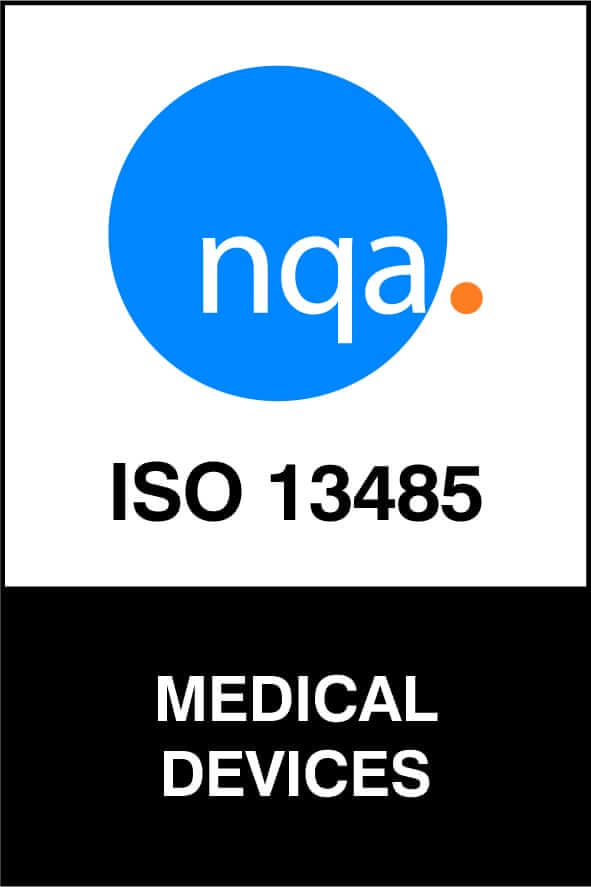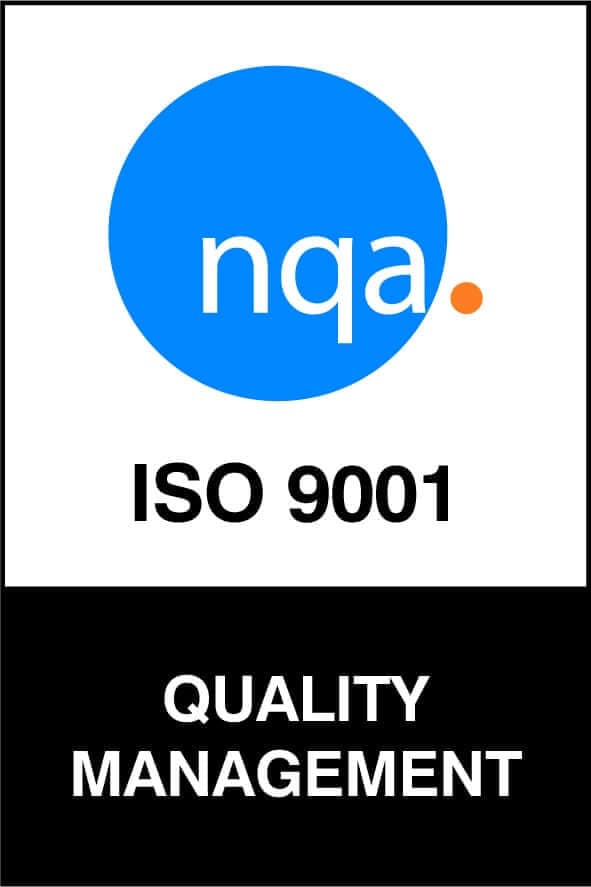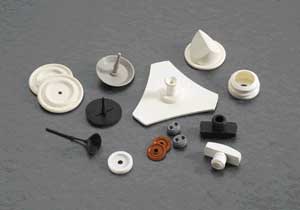Glossary of Terms
Continuous Flow
After identifying the value stream for a product, the focus is on avoiding batch and queue between different steps in the process flow.
You must ensure that the next downstream operation has:
- only what is needed
- just when it is needed
- in the exact amount needed
Enabling flow without interruption, detours, backflows, waiting, and scrap presents a constant challenge. Generally, the batch size should be reduced to the smallest possible size. The end target is to enable single piece flow, meaning producing only one product at a time.
The benefits of continuous flow are:
- improved response time to customer orders
- improved resource productivity
- improved quality
- reduced lead time
- reduced space
Epichlorohydrin
Epichlorohydrin rubber is available as a homopolymer (CO) and a copolymer (ECO) of epichlorohydrin. Reinforced, these rubbers have moderate tensile strength and elongation properties, plus an unusual combination of other characteristics. One of these is low heat buildup, which makes them suitable for applications involving cyclic shock or vibration.
The homopolymer has outstanding resistance to ozone, good resistance to swelling by oils, intermediate heat resistance, extremely low permeability to gases, and excellent weathering properties. This rubber also has low resilience characteristics and low-temperature flexibility only to 5F — characteristics that may be unsuitable for some applications.
The copolymer is more resilient and has low-temperature flexibility to -40F, but it is more permeable to gases. Oil resistance of both compounds is about the same. Typical applications include bladders, diaphragms, vibration-control equipment, mounts, vibration dampers, seals, gaskets, fuel hose, rollers, and belting.
EPDM
EPDM rubber (ethylene propylene diene rubber) is an elastomer which is characterized by wide range of applications. EPDM rubber is used in automotive weather-stripping and seals, glass-run channel, radiator, garden and appliance hose, tubing, belts, electrical insulation, roofing membrane, geomembranes, rubber mechanical goods, plastic impact modification, thermoplastic vulcanizates and motor oil additive applications. Sometime used in thermoformed packaging.
Fluorinated Silicones
This type of silicone provides most of the useful qualities of the regular silicones plus improved resistance to many hydrocarbon fluids such as fuels. Exceptions are ketones and phosphate esters; however, FVMQ rubbers can be blended with conventional dimethyl silicones, which have good resistance to these fluids at temperatures to 300F. The FVMQ rubbers are most useful where the best in low-temperature flexibility is required in addition to fluid resistance, although resistance to fluids (especially those containing aromatics) is poorer than that of the FKM-type fluorocarbon rubbers.
Fluorosilicone rubbers have moderate dielectric properties, low compression set, and excellent resistance to ozone and weathering. They are expensive and definitely special purpose. Typical applications include seals, tank linings, diaphragms, O-rings, and protective boots in electrical equipment.
Heijunka
Heijunka is a Japanese term that refers to production smoothing in which the total volume of parts and assemblies are kept as constant as possible throughout the value stream. A Heijunka box is a visual scheduling mechanism that distributes work into small time increments and ensures level work load.
JIT
Just In Time (JIT) is an inventory strategy implemented to improve the return on investment of a business by reducing in-process inventory and its associated costs. The process is driven by a series of signals, or kanban, that tell production processes to make the next part. kanban are usually simple visual signals, such as the presence or absence of a part on a shelf. JIT can lead to dramatic improvements in a manufacturing organization’s return on investment, quality, and efficiency when implemented correctly.
New stock is ordered when stock reaches the re-order level. This saves warehouse space and costs. However, one drawback of the JIT system is that the re-order level is determined by historical demand. If demand rises above the historical average planning duration demand, the firm could deplete inventory and cause customer service issues. To meet a 95% service rate a firm must carry about two standard deviations of demand in safety stock. Forecasted shifts in demand should be planned for around the kanban until trends can be established to reset the appropriate kanban level. In recent years manufacturers have touted a trailing 13 week average is a better predictor than most forecasters could provide.
Kaizen
The Japanese word “Kaizen” means improvement, improvements without spending much money, involving everyone from managers to workers, and using much common sense. The Japanese way encourages small improvements day after day, continuously. The key aspect of Kaizen is that it is an on-going, never-ending improvement process. It’s a soft and gradual method opposed to more usual western habits to scrap everything and start with new.
Kanban
Kanchan is a concept related to the Lean or Just In Time (JIT) production, but these two concepts are not the same thing. (The Japanese word “Kanchan” is a common everyday term meaning “sign” or “card” and utterly lacks the specialized meaning which this loanword has acquired in English.) According to Taiichi Ohno, the man credited with developing JIT, kanban is the means through which JIT is managed.
Kanban is a signaling system. As its name suggests, kanban uses cards to signal the need for an item. Other devices such as plastic markers (kanban squares) or balls (often golf balls) can also be used to trigger the movement, production, or supply of a unit in a factory.
For example, in the production of a widget, the operator has two shelves, one on either side of the workplace. The raw materials arrive on one shelf and the finished article on the other. These shelves act as kanban’s. The outgoing kanban signals the customer’s need so that when it is empty, the operator must produce one more widget.
The kanban is sized so that it can only hold however many the customer needs (usually one). When the operator begins work, he takes the raw material from the incoming kanban, thus signaling to the supplier that he needs more.
Kanban is frequently known as a “pull” system, as everything is pulled in response to past demand. Demand forecasts are not used in kanban systems. This is the opposite of the traditional “push” manufacturing philosophy, in which everything is made to forecasted future needs.
With this in mind, it is not surprising that an important determinant of the relative merits of “push” and “pull” is the quality of the demand forecast. If forecasts are good, then the kanban system will effectively waste useful information, whereas a good “push” system will produce just the right quantities at the right times. In contexts where demand is difficult to forecast, on the other hand, the best one can do is to quickly respond to observed demand. This is exactly what a kanban system does, as a demand signal immediately propagates through the entire chain. “Push” systems often encounter serious difficulties when demand forecasts turn out to be inaccurate.
Muda
Muda is a Japanese term for anything that is wasteful and doesn’t add value. Waste reduction is an effective way to increase profitability.
A process adds value by producing goods or providing a service. A process also consumes resources. Waste occurs when more resources are consumed than are necessary to produce the goods or provide the service.
Neoprene
Neoprene is the DuPont Chemical trade name for a family of synthetic rubbers based on polychloroprene. Neoprene was invented by DuPont scientists after Dr. Elmer K. Bolton of DuPont laboratories attended a lecture by Fr. Julius Arthur Nieuwland, a professor of chemistry at the University of Notre Dame. Fr. Nieuwland’s research was focused on acetylene chemistry and during the course of his work he produced divinyl acetylene, a jelly which firms into an elastic compound similar to rubber when passed over sulfur dichloride. After DuPont purchased the patent rights from the university, Wallace Carothers of DuPont took over commercial development of Nieuwland’s discovery in collaboration with Nieuwland himself. DuPont focused on monovinyl acetylene and reacted the substance with hydrogen chloride gas, manufacturing chloroprene. Polychloroprene is the polymer of chloroprene, the synthetic rubber known as Neoprene.
Neoprene (originally called Duprene) was the first mass-produced synthetic rubber compound. It is used in a wide variety of environments, such as in wetsuits, electrical insulation, and car fan belts. Its chemical inertness makes it well suited for industrial applications such as gaskets, hoses, and corrosion-resistant coatings. It can also be used as a base for adhesives. Neoprene is used for noise isolation in power transformer installations. Its springy consistency makes it notoriously difficult to fold when in sheet form. Neoprene can also be used as padding in external metal cases to protect the contents while allowing a snug fit. Neoprene is also used as a contrast in some jewelry designs.
Neoprene is also commonly used as a material for fly fishing waders, as it provides excellent insulation against cold. Neoprene waders are usually about 5 mm thick, and in the medium price-range as compared to cheaper materials such as nylon and rubber. However, Neoprene is less expensive than breathable fabrics.
Nitrile
The nitriles are copolymers of butadiene and acrylonitrile, used primarily for applications requiring resistance to petroleum oils and gasoline. Resistance to aromatic hydrocarbons is better than that of neoprene but not as good as that of polysulfide. NBR has excellent resistance to mineral and vegetable oils, but relatively poor resistance to the swelling action of oxygenated solvents such as acetone, methyl ethyl ketone, and other ketones. It has good resistance to acids and bases except those having strong oxidizing effects. Resistance to heat aging is good, often a key advantage over NR.
With higher acrylonitrile content, the solvent resistance of an NBR compound is increased but low-temperature flexibility is decreased. Low-temperature resistance is inferior to that of natural rubber, and although NBR can be compounded to give improved performance in this area, the gain is usually at the expense of oil and solvent resistance. As with SBR, this material does not crystallize on stretching, and reinforcing materials are required to obtain high strength. With compounding, nitrile rubbers can provide a good balance of low creep, good resilience, low permanent set, and good abrasion resistance.
Tear resistance is inferior to that of natural rubber, and electrical insulation is lower. NBR is used instead of natural rubber where increased resistance to petroleum oils, gasoline, or aromatic hydrocarbons is required. Uses of NBR include carburetor and fuel-pump diaphragms and aircraft hoses and gaskets. In many of these applications, the nitriles compete with polysulfides and neoprene’s.
Pull System
A pull system is a method of controlling the flow of resources by replacing only what has been consumed. A pull system relies on customer demand.
The overall result of pull systems is that you become far more responsive to your customers while, at the same time, you’re cutting costs. Production becomes more efficient and lead times, storage space, and expenses are reduced. Customer demand even becomes smoother over time as customer realize the new responsiveness of your systems to their real needs.
SBR
Styrene-butadiene SBR (SBR) is a polymeride consisting of styrene and butadiene. It has good abrasion resistance and good aging stability. SBR is stable in mineral oils, fats, aliphatic, aromatic, and chlorinated hydrocarbons.
- Possible temperature range: approx. -40 to +100 C (-40 to +212 F)
- Chemical Type: styrene-butadiene (copolymer)
- Trade names (common): GRS, Buna S (SBR)
- Elongation (%): 450-500
- Useful temperature range: -60 to 120 degrees Celsius (-75 to 250 degrees Fahrenheit)
- Major application characteristics: good physical properties; excellent abrasion resistance; not oil, ozone, or weather resistant; electrical properties good, but not outstanding
- Typical applications: pneumatic tires and tubes; heels and soles; gaskets
Silicone
Silicones, or polysiloxanes, are inorganic polymers consisting of a silicon-oxygen backbone (…-Si-O-Si-O-Si-O-…) with side groups attached to the silicon atoms. Certain organic side groups can be used to link two or more of these -Si-O- backbones together. By varying the -Si-O- chain lengths, side groups, and crosslinking, silicones can be synthesized into a wide variety of materials. They can vary in consistency from liquid to gel to rubber to hard plastic. The most common type is linear polydimethylsiloxane or PDMS. The second largest group of silicone materials is based on silicone resins, which are formed by branched and cage-like oligosiloxanes.
Silicones are odorless, colorless, water resistant, chemical resistant, oxidation resistant, stable at high temperature, have weak forces of attraction, low surface tension, and low freezing points and do not conduct electricity. They have many uses, such as lubricants, adhesives, sealants, gaskets, breast implants, pressure compensating diaphragms for drip irrigation emitters, dishware, and Silly Putty. Due to their thermal stability and relatively high melting and boiling points, silicones are often used where organic polymers are not applicable. Their unreactivity generally makes them non-toxic (see below). Simethicone, a silicone-based anti-foaming agent, has remained available as an over-the-counter substance and food additive.
Standardized Work
SWI’s are specific instructions that allow processes to be completed in a consistent, timely, and repeatable manner. By implementing Standardized Work, employees will increase production, improve quality, and enjoy a safer working environment.
Vamac
Vamac materials provide, at a moderate price, heat and fluid resistance surpassed by only the more expensive, specialty polymers such as fluorocarbons and fluorosilicone. The material has very good resistance to hot oils, hydrocarbon-based or glycol-based proprietary lubricants, transmission, and power-steering fluids. It is not recommended for use with esters, ketones, highly aromatic fluids, or high-pressure steam. A special feature of Vamac is its nearly constant damping characteristic over broad ranges of temperature, frequency, and amplitude.
Viton®
Viton® is a synthetic rubber and fluoropolymer elastomer commonly used in O-rings and other molded or extruded goods. The name is trademarked by DuPont Performance Elastomers.
Viton® fluoroelastomers are categorized under the ASTM D1418 & ISO 1629 designation of FKM. This class of elastomers is a family comprising copolymers of hexafluoropropylene (HFP) and vinylidene fluoride (VDF or VF2), terpolymers of tetrafluoroethylene (TFE), vinylidene fluoride (VDF) and hexafluoropropylene (HFP) as well as perfluoromethylvinylether (PMVE) containing specialties. The fluorine content of the most common Viton grades varies between 66 and 70%.
The performance of fluoroelastomers in aggressive chemicals depends on the nature of the base polymer and the compounding ingredients used for molding the final products (e.g., O-rings). This performance can vary significantly when end-users purchase Viton polymer containing rubber goods from different sources. Viton is generally compatible with hydrocarbons (an advantage over Buna-N, which is the most common O-ring material), but incompatible with ketones such are acetone. O-rings made of Viton are typically color coded as brown.
5S
5S is a reference to five Japanese words that describe standardized cleanup:
- Seiri: tidiness, organization. Refers to the practice of sorting through all the tools, materials, etc., in the work area and keeping only essential items. Everything else is stored or discarded. This leads to fewer hazards and less clutter to interfere with productive work.
- Seiton: orderliness. Focuses on the need for an orderly workplace. Tools, equipment, and materials must be systematically arranged for the easiest and most efficient access. There must be a place for everything, and everything must be in its place.
- Seiso: cleanliness. Indicates the need to keep the workplace clean as well as neat. Cleaning in Japanese companies is a daily activity. At the end of each shift, the work area is cleaned up and everything is restored to its place.
- Seiketsu: standards. Allows for control and consistency. Basic housekeeping standards apply everywhere in the facility. Everyone knows exactly what his or her responsibilities are. Housekeeping duties are part of regular work routines.
- Shitsuke: sustaining discipline. Refers to maintaining standards and keeping the facility in safe and efficient order day after day, year after year.






